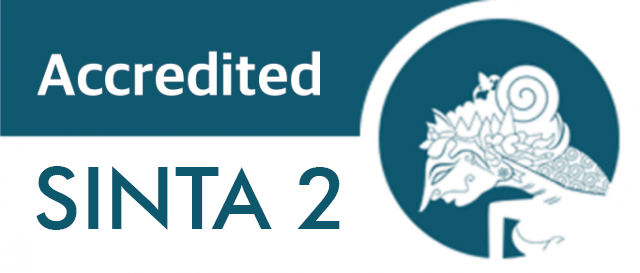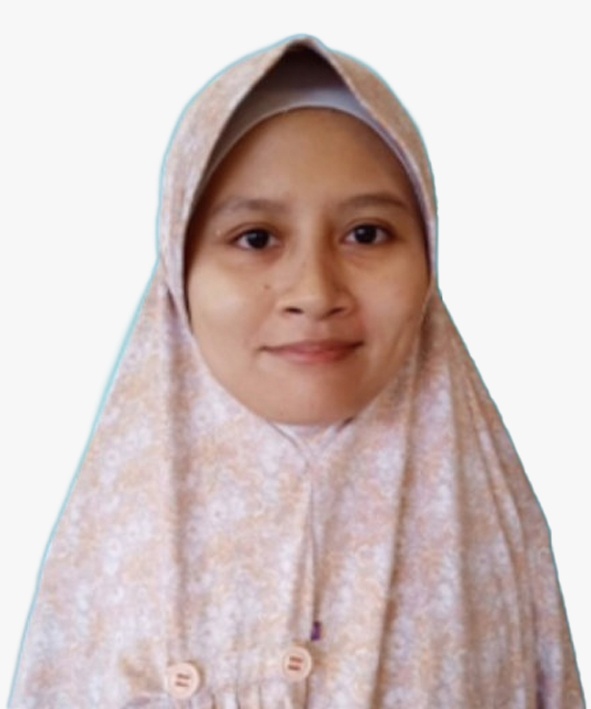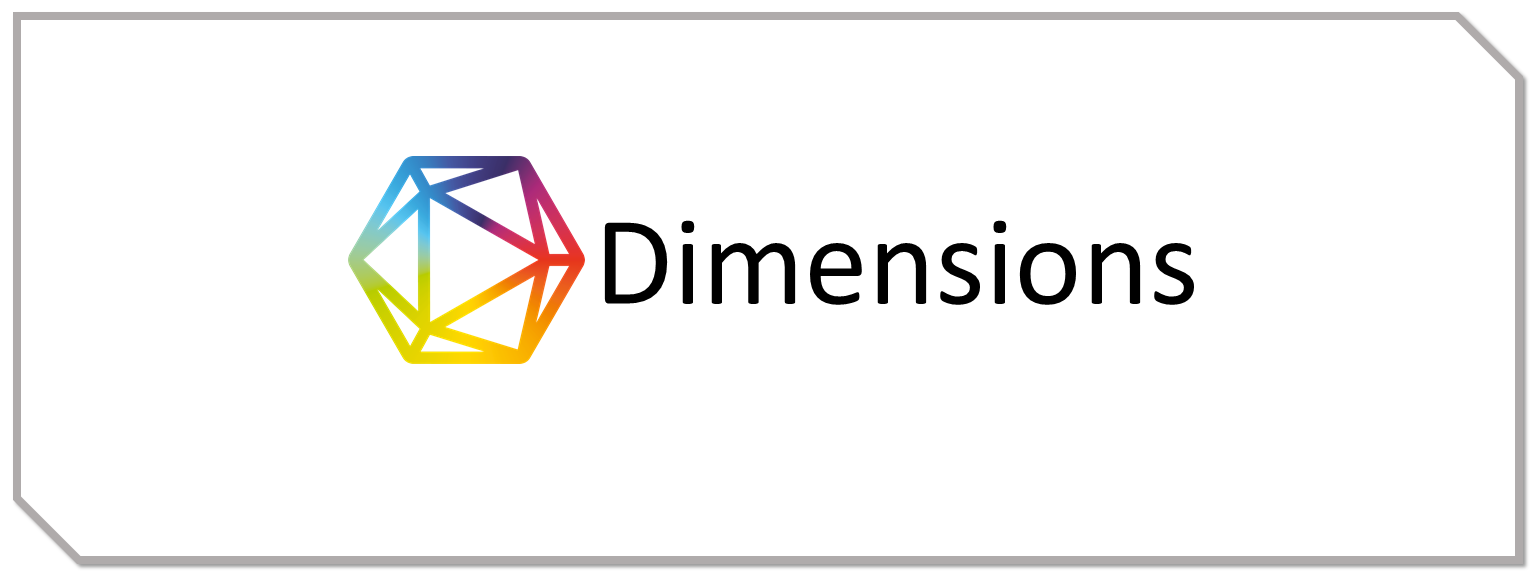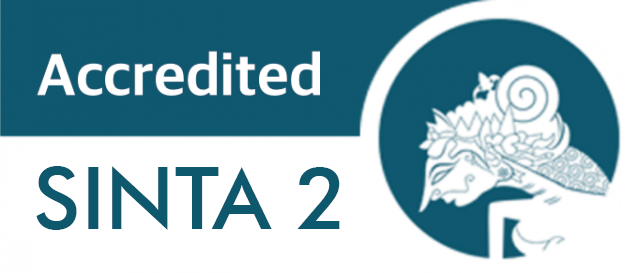Self-Image Strengthening Program in Children With Disabilities and Chronic Illnesses: A Quasi-Experimental Research
Introduction: Children with disabilities/chronic illnesses often have difficulties in socializing and tend to have a low self-image. Parents, as the main children’s self-image-forming factor, also ex-perience difficulties in dealing with their children. This study aims to increase children’s and parents’ knowledge about self-image and acceptance, hence improving children’s self-image. Methods: A quasi-experimental research study with the intervention of three modules for children and parents was carried out between June and September 2022. Thirty children and their parents from the Community for Empowerment of Parents of Children with Special Needs, the Heart Warrior Community, and the Foundation for De-velopment of Disabled Children were included. Pretest and posttest were measured and statistically tested using the Wilcoxon test. At the end of the interventions, the Rosenberg Self-Esteem Scale, Self-Harm Inventory, Strengths and Difficulties Questionnaire, and Pediatric Quality of Life were measured. Results: There was a sig-nificant increase in knowledge on 3 child modules and 1 parent module. The Rosenberg Self-Esteem Scale score is 17.17 ± 2.618 (good self-image); the Self-Harm Inventory score is 2.18 ± 3.275 (low risk of self-injury); the Strength and Difficulties Questionnaire score is 18.37 ± 5.230 (moderate difficulty); and the Pediatric Qual-ity of Life value is 34.64 ± 12.077 (good quality of life). Conclusion: The self-image strengthening module intervention is effective in increasing children’s and parents’ knowledge. Children with dis-abilities/chronic illnesses have a good self-image, low self-harm tendencies, and relatively good quality of life.
Introduction
Children with physical disabilities and chronic illnesses have limitations not only in activities but also in social functioning. They tend to have low self-esteem and experience isolation from their peers[1]. Asher and Coie's study found that children with disabilities and chronic illnesses who experienced peer rejection tended to have less interest in school, inhibited social experiences, and were motivated to be harmed. It affected self-concept and academic performance too[2].
Children with low self-esteem often have difficulty managing emotions, tend to withdraw from peer groups, and are socially isolated[3]. Self-image is related to children's understanding of their conditions and successful psychosocial functioning. Understanding their conditions can help them set realistic goals and manage their emotions[4]. Family support and peer relationships also play an important role in influencing children’s self-image. Children who receive positive support from parents, teachers, and peers have a more positive self-concept[5]. However, parents are often unable to provide this support because they have difficulty accepting their children’s disabilities and chronic illnesses, feel depressed and tired, and lack knowledge about their children’s conditions. In addition, many parents don't understand the importance of mental health.
This study aims to increase children's knowledge of self-image, managing emotions, and dealing with peer pressure, as well as parents' knowledge of children’s disability and chronic illness conditions, managing expectations and acceptance, mental health literacy, and stress management. It is expected that the interventions for children with disabilities and chronic illnesses and their parents will improve children's self-image.
Methods
This study is quasi-experimental research with a one-group pretest-posttest design method. This study was conducted in Malang, East Java, from June to September 2022. All subjects have given their written informed consent with oral and written explanations beforehand. This research received permission from the Research Ethics Commission of Universitas Brawijaya, number 104/EC/KEPK/05/2020.
The children and parents involved in this research were members of the Community for the Empowerment of Parents of Children with Special Needs (ABK), the Community of Heart Warriors (KPJ), and the Foundation for the Development of Disabled Children (YPAC). This research was conducted using non-probability sampling with a consecutive sampling method. The inclusion criteria in this study were all children and parents who were part of the Community for the Empowerment of Parents of Children with Special Needs (ABK), the Heart Warrior Community, and the Foundation for the Development of Disabled Children, Malang, Indonesia, in June-September 2022. The exclusion criteria in this study are children and parents who cannot read the questionnaire.
This study measures changes in children's and parents' knowledge. The interventions consisted of 3 training modules for children and 3 training modules for parents. The topics for children’s training modules included improving self-image, managing emotions, and dealing with peers. Parents were given modules on strategies for becoming prosperous parents of disabled children (managing expectations and acceptance, stress management, and mental health literacy), seminars on physical disabilities and chronic illnesses, and the role of family support in strengthening children's self-image, as well as parenting and communication skills. Before and after each training module, a pretest and posttest were carried out according to each topic. Training modules are conducted in hybrid (online and offline) three-session seminars in each community. The interval of each session was around 2 weeks with a duration of around 8 hours, including delivery of material, rest, and prayer. A 30-minute discussion was delivered after each topic. The pretest and posttest scores obtained were compared and statistically tested using the Wilcoxon test.
At the end of the intervention series, the Rosenberg Self-Esteem Scale (RSES), Self-Harm Inventory (SHI), Children's Strengths and Difficulties Questionnaire (SDQ), and Pediatric Quality of Life Questionnaire (PedQoL) were measured. Interpretation of the RSES is carried out by calculating the average score of all respondents. The average score of ≥15 means a child has a good self-image, whereas those with less have a poor self-image. SHI interpretation is carried out by calculating the average score of all respondents. Scores with a mean value of ≥5 have a high risk of engaging in self-harming behavior or being suspected of being a borderline personality. The SDQ questionnaire is interpreted by calculating the total mean value and classified based on interval values. The score interval 0 to 13 is classified as mild difficulty, 14 to 27 as moderate difficulty, and >27 as severe difficulty. The PedQoL questionnaire is interpreted by calculating the total mean value and classified based on interval values. A score interval of 0 to 18 means a high quality of life, a score of 19 to 37 a excellent quality of life, a score of 38 to 57 a moderate quality of life, a score of 58 to 76 a poor quality of life, and a score of more than 76 a catastrophic quality of life.
Results
Demographic data on 30 children shows that the majority gender is male, with an average age of around 11 years, and the highest education is elementary school. It was found that before intervention, children tended to remain silent when angry. When experiencing bullying, children also tended to remain silent or report it to their parents and/or teachers. Most children are close to both parents and tend to have activities with their parents. A total of 16 respondents were children with chronic illnesses (congenital heart disease, rheumatic heart disease, and other heart disease in children), and 14 respondents were children with
fattah hanurawan, “The Role of Psychology in Special Needs Education,” J. ICSAR, vol. 1, no. 2, pp. 180–184, Jul. 2017, doi: 10.17977/um005v1i22017p180.
G.-J. Will, P. A. C. van Lier, E. A. Crone, and B. Güroğlu, “Chronic Childhood Peer Rejection is Associated with Heightened Neural Responses to Social Exclusion During Adolescence,” J. Abnorm. Child Psychol., vol. 44, no. 1, pp. 43–55, Jan. 2016, doi: 10.1007/s10802-015-9983-0.
J. P. Shonkoff, “Capitalizing on Advances in Science to Reduce the Health Consequences of Early Childhood Adversity,” JAMA Pediatr., vol. 170, no. 10, p. 1003, Oct. 2016, doi: 10.1001/jamapediatrics.2016.1559.
N. Hulme, C. Hirsch, and L. Stopa, “Images of the Self and Self-Esteem: Do Positive Self-Images Improve Self-Esteem in Social Anxiety?,” Cogn. Behav. Ther., vol. 41, no. 2, pp. 163–173, Jun. 2012, doi: 10.1080/16506073.2012.664557.
Y. A. Saputro and R. Sugiarti, “Pengaruh Dukungan sosial teman sebaya dan Konsep Diri terhadap Penyesuaian Diri pada Siswa SMA Kelas X,” Philanthr. J. Psychol., vol. 5, no. 1, p. 59, Jun. 2021, doi: 10.26623/philanthropy.v5i1.3270.
H. Ron-Shapira and T. Izquierdo-Rus, “El impacto de los problemas de aprendizaje en la autoimagen de los niños de educación primaria,” Int. J. New Educ., no. 11, pp. 27–39, Jul. 2023, doi: 10.24310/IJNE.11.2023.16622.
B. El-Daw and H. Hammoud, “The Effect of Building Up Self-esteem Training on Students’ Social and Academic Skills 2014,” Procedia - Soc. Behav. Sci., vol. 190, pp. 146–155, May 2015, doi: 10.1016/j.sbspro.2015.04.929.
K. M. Park and H. Park, “Effects of Self-esteem Improvement Program on Self-esteem and Peer Attachment in Elementary School Children with Observed Problematic Behaviors,” Asian Nurs. Res. (Korean. Soc. Nurs. Sci)., vol. 9, no. 1, pp. 53–59, Mar. 2015, doi: 10.1016/j.anr.2014.11.003.
G. L. McVey, R. Davis, S. Tweed, and B. F. Shaw, “Evaluation of a school‐based program designed to improve body image satisfaction, global self‐esteem, and eating attitudes and behaviors: A replication study,” Int. J. Eat. Disord., vol. 36, no. 1, pp. 1–11, Jul. 2004, doi: 10.1002/eat.20006.
F. Corallo et al., “Improvement of Self-Esteem in Children with Specific Learning Disorders after Donkey-Assisted Therapy,” Children, vol. 10, no. 3, p. 425, Feb. 2023, doi: 10.3390/children10030425.
A. Mardhiyah, S. L. Panduragan, and H. S. Mediani, “Reducing Psychological Impacts on Children with Chronic Disease via Family Empowerment: A Scoping Review,” Healthcare, vol. 10, no. 10, p. 2034, Oct. 2022, doi: 10.3390/healthcare10102034.
M. Pinquart, “Self‐esteem of children and adolescents with chronic illness: a meta‐analysis,” Child. Care. Health Dev., vol. 39, no. 2, pp. 153–161, Mar. 2013, doi: 10.1111/j.1365-2214.2012.01397.x.
W. Fu, C. Wang, W. Tang, S. Lu, and Y. Wang, “Emotional Intelligence and Well-Being of Special Education Teachers in China: The Mediating Role of Work-Engagement,” Front. Psychol., vol. 12, Aug. 2021, doi: 10.3389/fpsyg.2021.696561.
P. Munday and C. Horton, “The Impact of Emotional Intelligence among Children with Disabilities and the Role of Professional Educators and Caregivers: A Literature Review,” Int. J. Whole Child, vol. 6, no. 1, pp. 91–107, 2021, [Online]. Available: https://libjournals.mtsu.edu/index.php/ijwc/article/view/2050
N. Adibsereshki, M. Shaydaei, and G. Movallali, “The effectiveness of emotional intelligence training on the adaptive behaviors of students with intellectual disability,” Int. J. Dev. Disabil., vol. 62, no. 4, pp. 245–252, Oct. 2016, doi: 10.1179/2047387715Y.0000000014.
A. Habibzadeh, S. Pourabdol, and S. Saravani, “The effect of emotion regulation training in decreasing emotion failures and self-injurious behaviors among students suffering from specific learning disorder (SLD).,” Med. J. Islam. Repub. Iran, vol. 29, p. 279, 2015.
B. Lee, H. J. Park, M. J. Kwon, and J. H. Lee, “A sound mind in a sound body?: the association of adolescents’ chronic illness with intrinsic life goals and the mediating role of self-esteem and peer relationship,” Vulnerable Child. Youth Stud., vol. 14, no. 4, pp. 338–350, Oct. 2019, doi: 10.1080/17450128.2019.1626520.
J. S. LeBovidge, “Psychological Adjustment of Children and Adolescents WithChronic Arthritis: A Meta-analytic Review,” J. Pediatr. Psychol., vol. 28, no. 1, pp. 29–39, Jan. 2003, doi: 10.1093/jpepsy/28.1.29.
R. N. Greenley et al., “A Meta-analytic Review of the Psychosocial Adjustment of Youth with Inflammatory Bowel Disease,” J. Pediatr. Psychol., vol. 35, no. 8, pp. 857–869, Sep. 2010, doi: 10.1093/jpepsy/jsp120.
M. Miyahara and J. Piek, “Self-Esteem of Children and Adolescents with Physical Disabilities: Quantitative Evidence from Meta-Analysis,” J. Dev. Phys. Disabil., vol. 18, no. 3, pp. 219–234, Nov. 2006, doi: 10.1007/s10882-006-9014-8.
F. E. Ikiz and F. S. Cakar, “Perceived social support and self-esteem in adolescence,” Procedia - Soc. Behav. Sci., vol. 5, pp. 2338–2342, 2010, doi: 10.1016/j.sbspro.2010.07.460.
D. Lobato, F. Montesinos, E. Polín, and S. Cáliz, “Acceptance and Commitment Training Focused on Psychological Flexibility for Family Members of Children with Intellectual Disabilities,” Int. J. Environ. Res. Public Health, vol. 19, no. 21, p. 13943, Oct. 2022, doi: 10.3390/ijerph192113943.
S. A. Herisi, A. N. Agdasi, and S. D. Hoseininasab, “Effectiveness of emotional intelligence training on resilience of parents with abnormal children in Tehran,” Int. J. Health Sci. (Qassim)., pp. 12746–12759, May 2022, doi: 10.53730/ijhs.v6nS1.8187.
H. Alibakhshi, F. Mahdizadeh, M. Siminghalam, and R. Ghorbani, “The Effect of Emotional Intelligence on the Quality of Life of Mothers of Children with Autism,” Middle East J. Rehabil. Heal., vol. 5, no. 1, Jan. 2018, doi: 10.5812/mejrh.12468.
M. Whiting, “Impact, meaning and need for help and support,” J. Child Heal. Care, vol. 17, no. 1, pp. 92–108, Mar. 2013, doi: 10.1177/1367493512447089.
N. Singal, “Schooling children with disabilities: Parental perceptions and experiences,” Int. J. Educ. Dev., vol. 50, pp. 33–40, Sep. 2016, doi: 10.1016/j.ijedudev.2016.05.010.
K. Kruithof, D. Willems, F. van Etten‐Jamaludin, and E. Olsman, “Parents’ knowledge of their child with profound intellectual and multiple disabilities: An interpretative synthesis,” J. Appl. Res. Intellect. Disabil., vol. 33, no. 6, pp. 1141–1150, Nov. 2020, doi: 10.1111/jar.12740.
A. R. Junaidi and D. A. Dewantoro, “Parents’ Perceptions of Children with Disabilities,” 2020. doi: 10.2991/assehr.k.201214.205.
D. Hawari, Margarita Maria Maramis, and Subur Prajitno, “Effects of Family Relations Towards Risk of Depression in Adolescents,” J. Psikiatri Surabaya, vol. 12, no. 1, pp. 20–27, May 2023, doi: 10.20473/jps.v12i1.24909.
E. Gusrianti, T. I. Winarni, and S. M. Faradz, “Factors Affecting Parents’ Acceptance towards Children with Familial Intellectual Disability (ID),” J. Biomed. Transl. Res., vol. 4, no. 2, p. 45, Dec. 2018, doi: 10.14710/jbtr.v4i2.3659.
M. Firouzkouhi Moghaddam, T. Rakhshani, M. Assareh, and A. Validad, “Child self-esteem and different parenting styles of mothers: a cross-sectional study,” Arch. Psychiatry Psychother., vol. 19, no. 1, pp. 37–42, Mar. 2017, doi: 10.12740/APP/68160.
A. Beato, A. I. Pereira, L. Barros, and P. Muris, “The Relationship Between Different Parenting Typologies in Fathers and Mothers and Children’s Anxiety,” J. Child Fam. Stud., vol. 25, no. 5, pp. 1691–1701, May 2016, doi: 10.1007/s10826-015-0337-x.
C. Malboeuf-Hurtubise, G. Taylor, and G. A. Mageau, “Impact of a Mindfulness-Based Intervention on Basic Psychological Need Satisfaction and Internalized Symptoms in Elementary School Students With Severe Learning Disabilities: Results From a Randomized Cluster Trial,” Front. Psychol., vol. 10, Dec. 2019, doi: 10.3389/fpsyg.2019.02715.
Copyright (c) 2025 Frilya Rachma Putri, Sri Andarini, Nuretha Hevy Purwaningtyas, Ariani, Dyahris Koentartiwi, Kresna Septiandy Runtuk, Puspa Maharani, Herman Yosef, Janice Valencia, Elvira Irene Tjahyadi, Monica Sari Devy, Mayniar Ayu Rahmadian

This work is licensed under a Creative Commons Attribution-ShareAlike 4.0 International License.
1. Copyright of this journal is possession of the Author, by the knowledge of the Editorial Board and Journal Manager, while the moral right of the publication belongs to the author.
2. The journal allows the author(s) to retain publishing rights without restrictions.
3. The articles are published under a Creative Commons Attribution Share-Alike (CC BY-SA) license. Many research funding bodies prefer the CC BY-SA license because it allows for maximum dissemination and re-use of open access materials. Users are free to share (copy, distribute, and transmit) and remix (adapt) the contribution under this license, including for commercial purposes, as long as they attribute the contribution in the manner specified by the author or licensor.




























